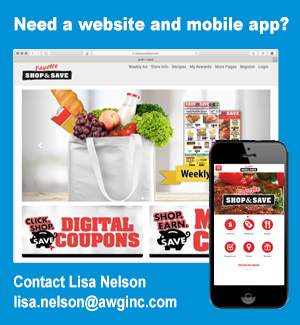In the grocery toolbox, seafood can be viewed as one of those specialty tools you don’t need all the time, but you would have trouble doing without it.
The American seafood shopper only eats about 16 pounds of seafood per year vs. 109 pounds of poultry and 108 pounds of meat, according to the Food Marketing Institute. However, seafood shoppers have a higher average household income and spend more on groceries than the average shopper.
Most importantly – when seafood is part of a basket, the average basket almost triples. Suffice it to say, making sure you cater to these shoppers will be important to your bottom line.

Most seafood shoppers say their primary seafood store is the same as their primary grocery store, but a third of those shoppers go elsewhere for their primary seafood shopping. That’s likely because their primary grocery store does not offer an acceptable selection or quality of seafood.
So what leads the seafood consumer to buy? FMI’s “Power Of Seafood” report says product quality is the most important factor in purchase decisions. Freshness, taste/flavor, and type of species are also very high factors. It’s time to take a stock of your selection. How quality is your product? Does it appear and smell fresh? Are you tasting it to ensure it tastes great?
Even for those seafood buyers, knowing how to cook seafood can be a mystery. Many say they would like more information on how to cook seafood. Think about offering different suggestions at the meat counter or where you merchandise. Also think about sharing videos on your social media or digital platforms on how to prepare different types of seafood.
Since converting non-seafood buyers is the hardest thing to do, step one is likely to increase the seafood buys of regular buyers and non-regular buyers. For those regular buyers, think about promotions and sales that can drive them to buy more and have them looking to you as their primary seafood source. For those occasional buyers, think about breaking that normal behavior pattern by disrupting their normal shopping trip. Try sampling events and in-store demonstrations to drive trial and get your customers open to new flavors.
The power to drive sales in meat is in your hands. Like any area of your store, you can’t simply have a seafood section and forget it. You have to drive promotions, educate your customers, and deliver quality product to get those customers putting seafood in their basket.
CAST YOUR NET:
Contact AWG Corporate Meat Manager Charlie Jester for more information









